70 Years of Volkswagen T1
In March 1950, Volkswagen began production of the Type 2 with the drivetrain from the Beetle (Type 1). For the first time, this vehicle opened up the possibility of acquiring a VW for the whole family. In addition, this vehicle was also suitable for large transports and over the years appeared in a variety of body styles for a wide range of applications.
History
After Ferdinand Porsche had finished developing the Volkswagen, the Second World War began. During this time, only military versions of the Volkswagen came off the assembly line, with Kommandeurwagen (command car), Kübelwagen (bucket car) and Schwimmwagen (swim car). After the end of the war, the plant in Wolfsburg was actually supposed to be dismantled and handed over to the British car industry as a war reparation service. However, nobody there wanted the compact rear engined car or the associated pressing tools. Ivan Hurst, who was just 29 years old at the time, was commissioned as a British Major to push ahead with the dismantling. Instead, he recognized the importance of the VW plant for the re-motorization of Germany and the military facilities of the Allies. In order to resume production, he borrowed forklifts and transporters from the army, but these were repeatedly recalled and used elsewhere.
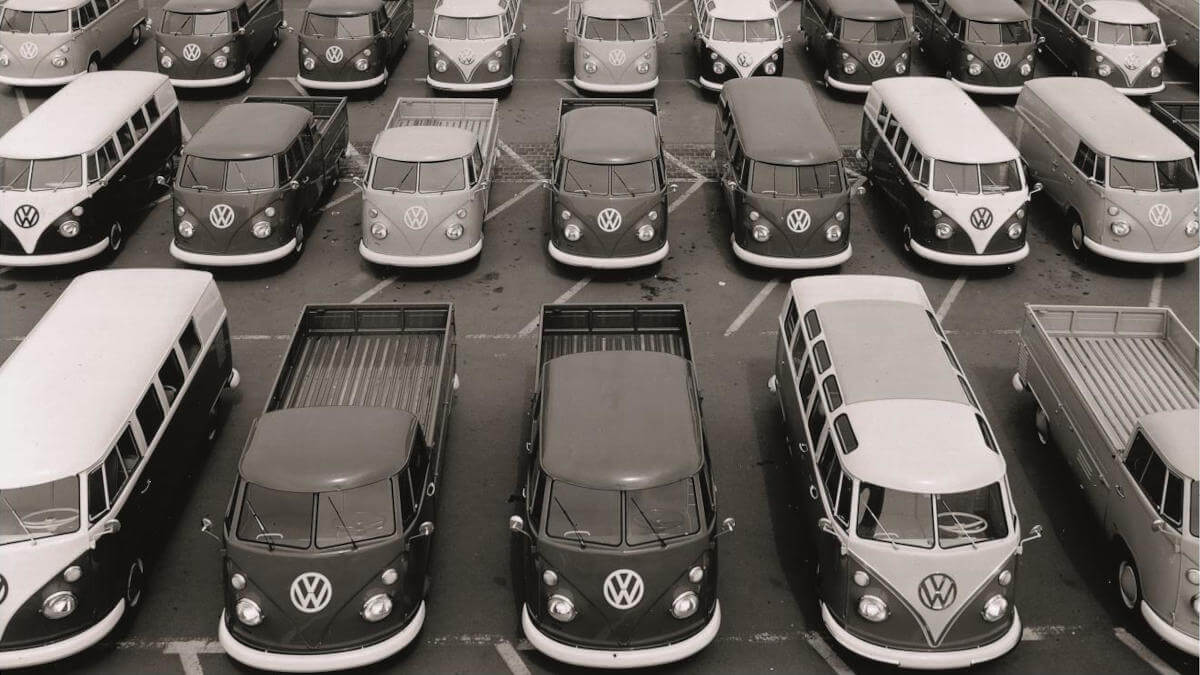



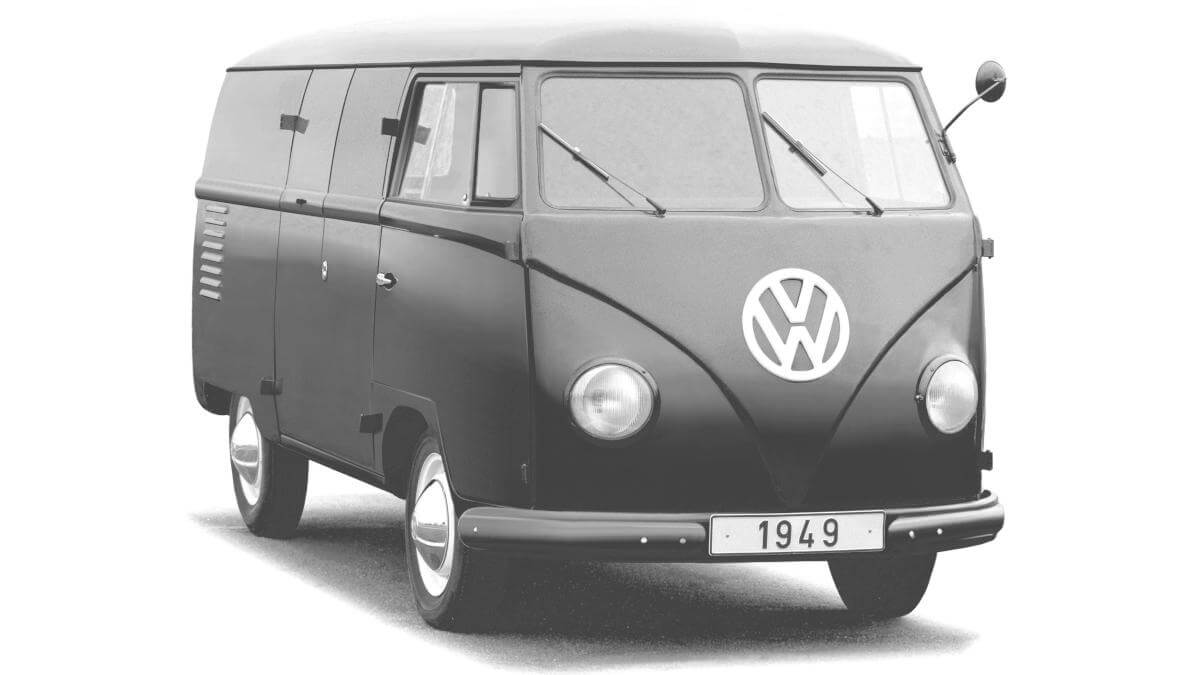



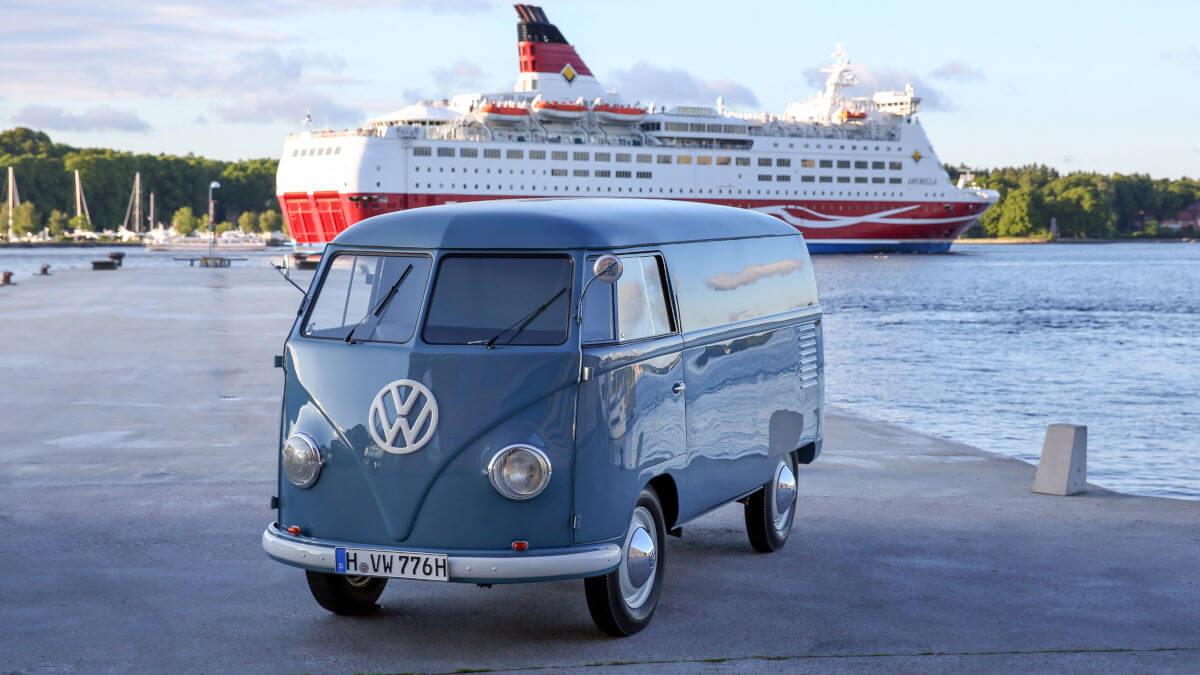



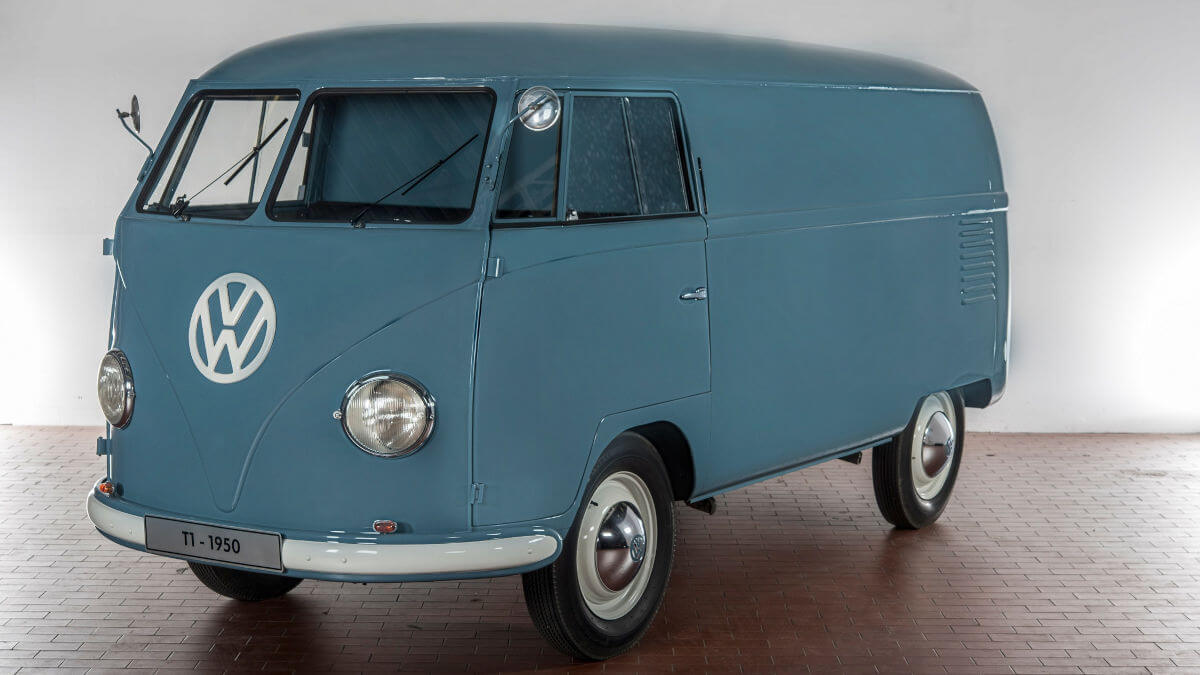











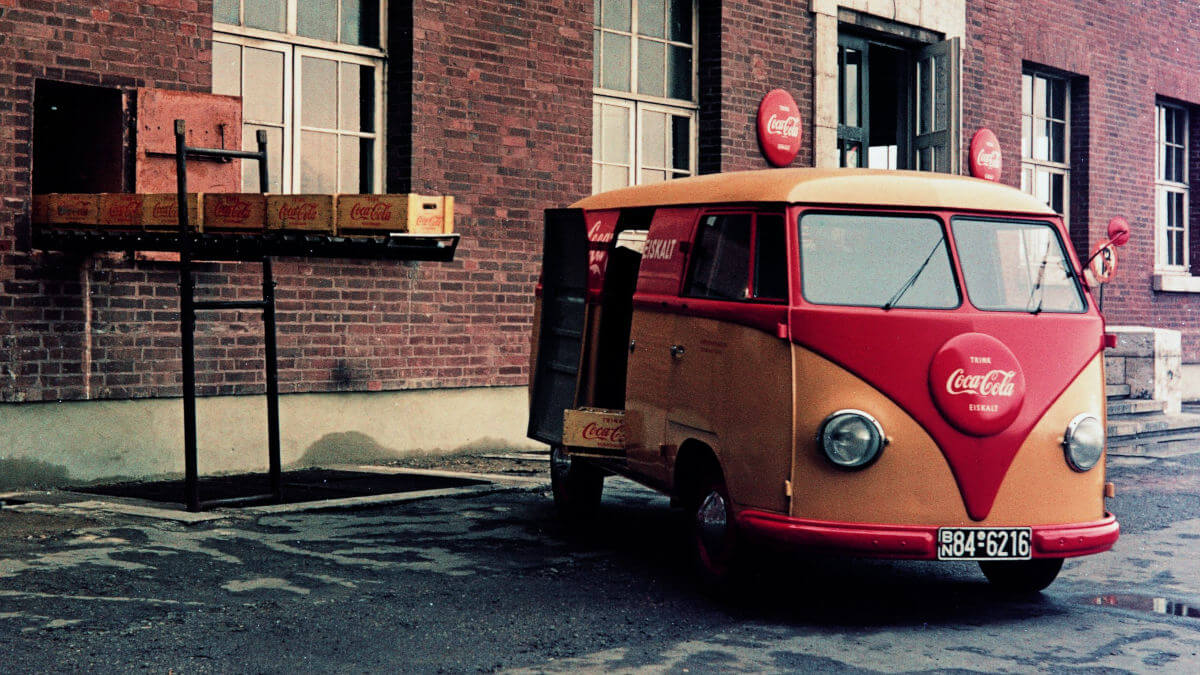



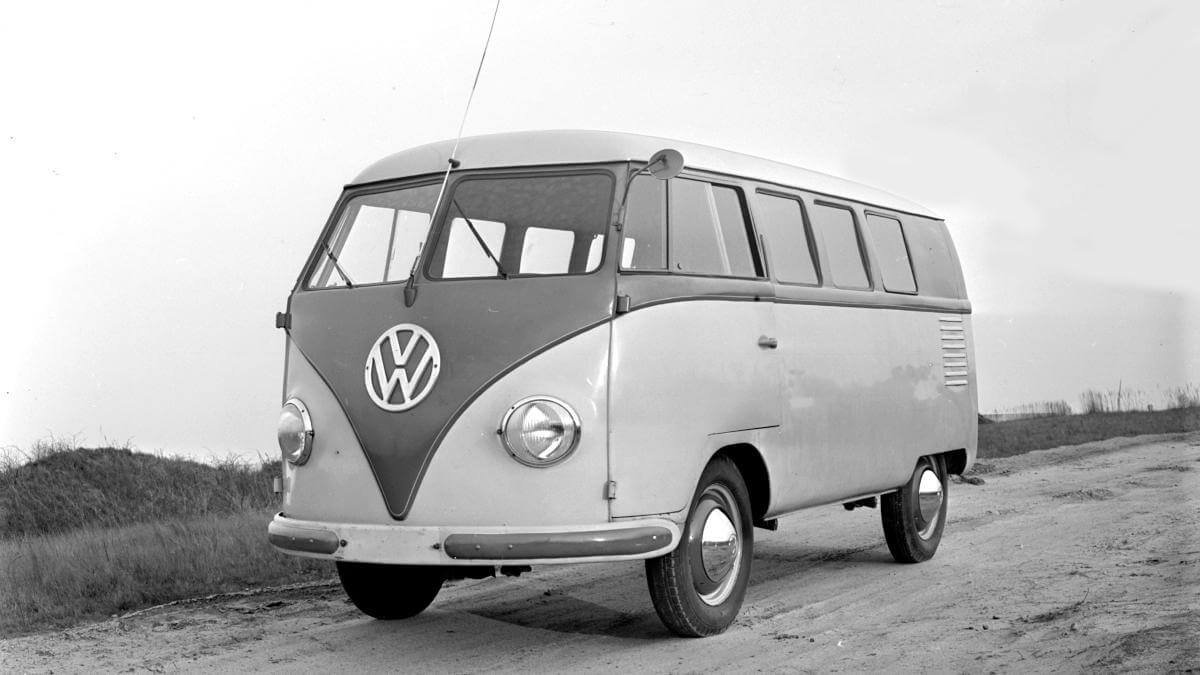







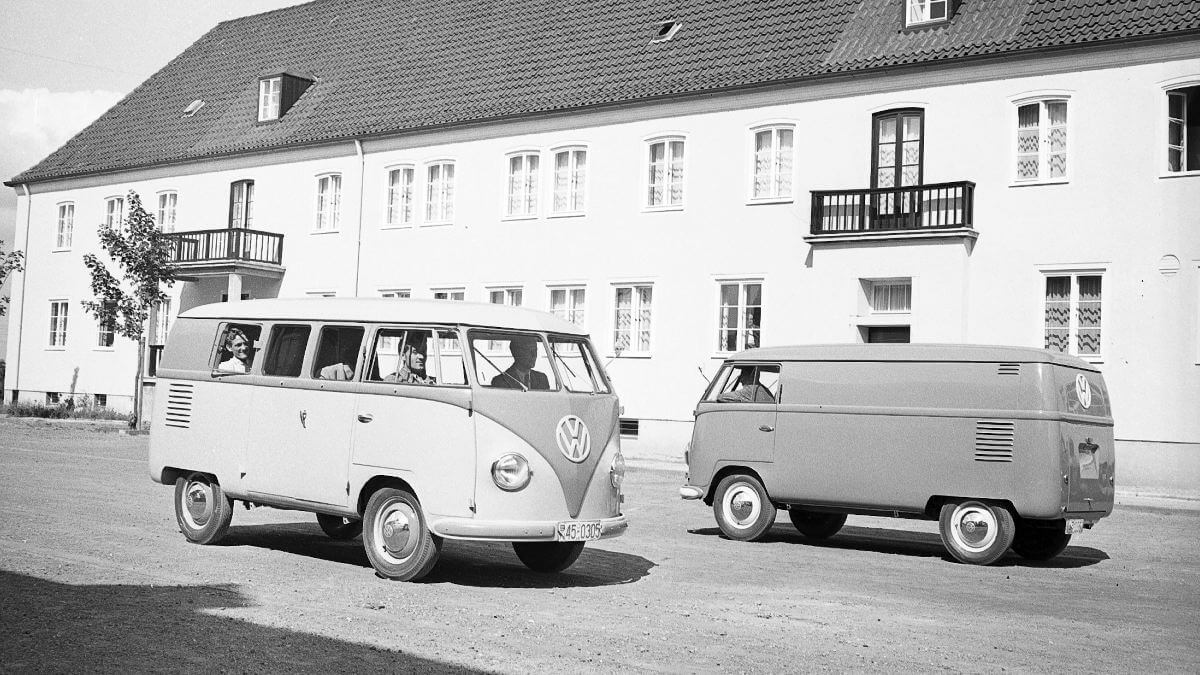



From the panel truck to the T1
From leftover components of the Kübelwagen, the factory team then developed some special transport vehicles in which the driver sat at the back over the engine and a large platform was available at the front. The production staff soon christened this vehicle ‘Plattenwagen’ (panel truck). In 1947, Ben Pon, who later became the Dutch VW importer, visited the Wolfsburg plant and saw the Plattenwagen there. He recognized their usefulness and considered a commercial version for the Netherlands, but couldn’t convince the authorities there to approve these vehicles for road use. So he then came up with the idea of a closed van, in which the driver would sit in front of the front axle while the boxer engine remained in the rear. His concept envisaged a payload of up to 750 kilograms. After Heinrich Nordhoff was appointed the first post-war boss of VW in 1948, Pon’s idea entered the prototype stage under development manager Alfred Haesler.
Nordhoff decided on the design
At that time, car manufacturers didn’t have their own design department. So the designers often created the shapes of a car right away. Alfred Haesler created two different versions, one with a flat and one with a curved front end. Nordhoff liked the rounded shape with a split windshield better. Through wind tunnel tests with scale models, the cX value was reduced from the original 0.75 to 0.45. At the same time, Haesler and his team added the characteristic tip at the front as a sheet metal fold, which also served as a dividing line for the two-color paint finish on later luxury versions. Instead of the originally planned Beetle chassis with central tubular frame, the engineers had to develop a new floor assembly with two longitudinal members after the first disappointing test drives. The bodies were welded onto this base.








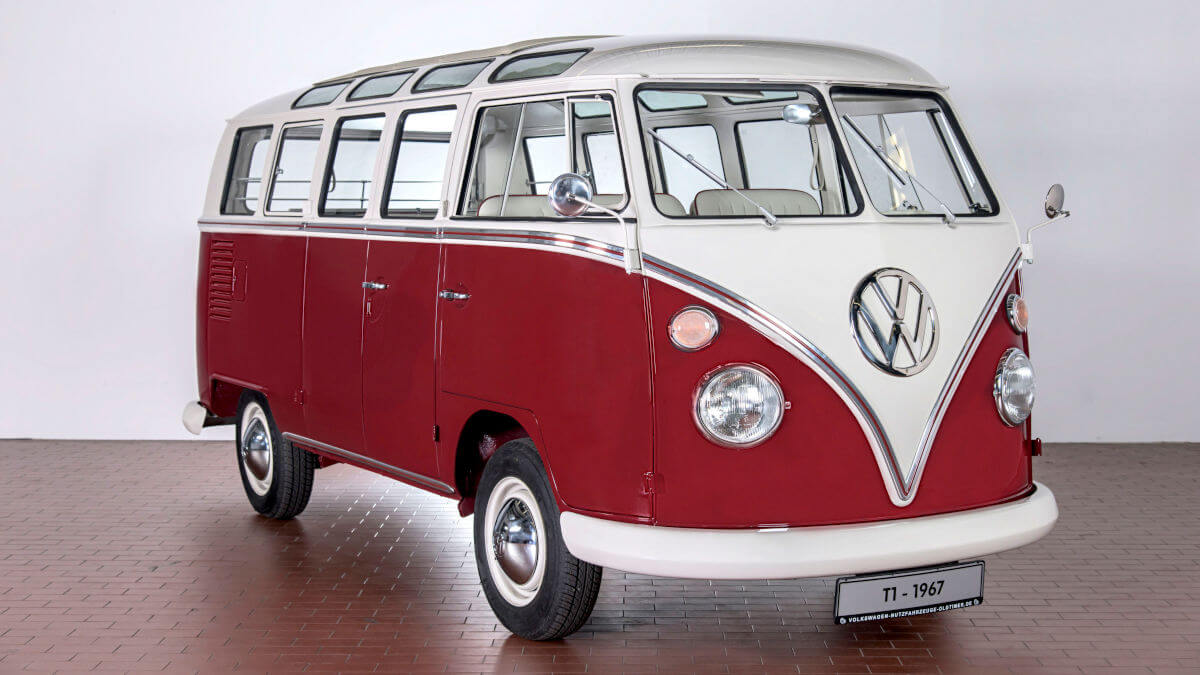



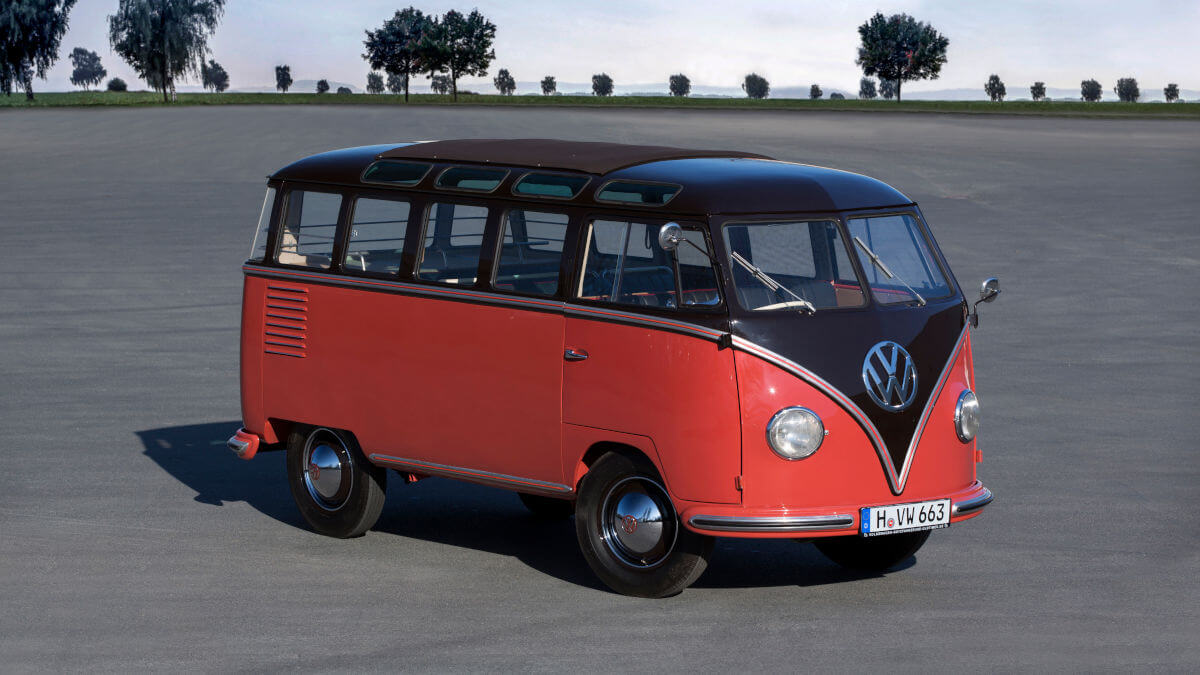



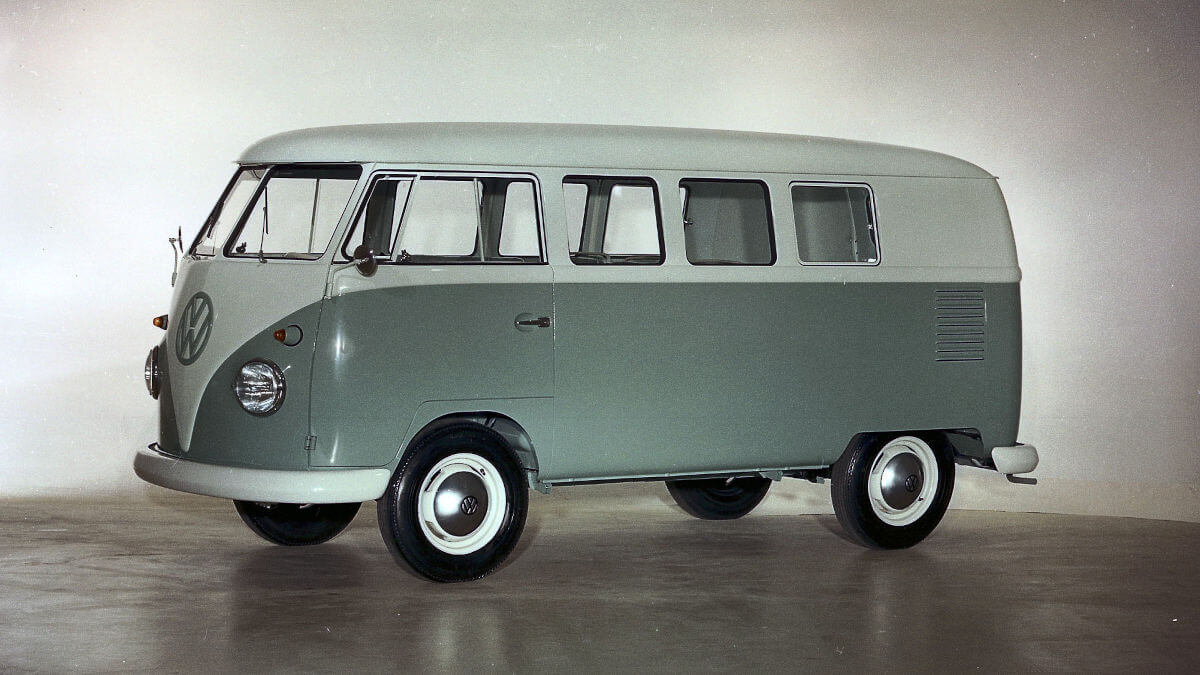















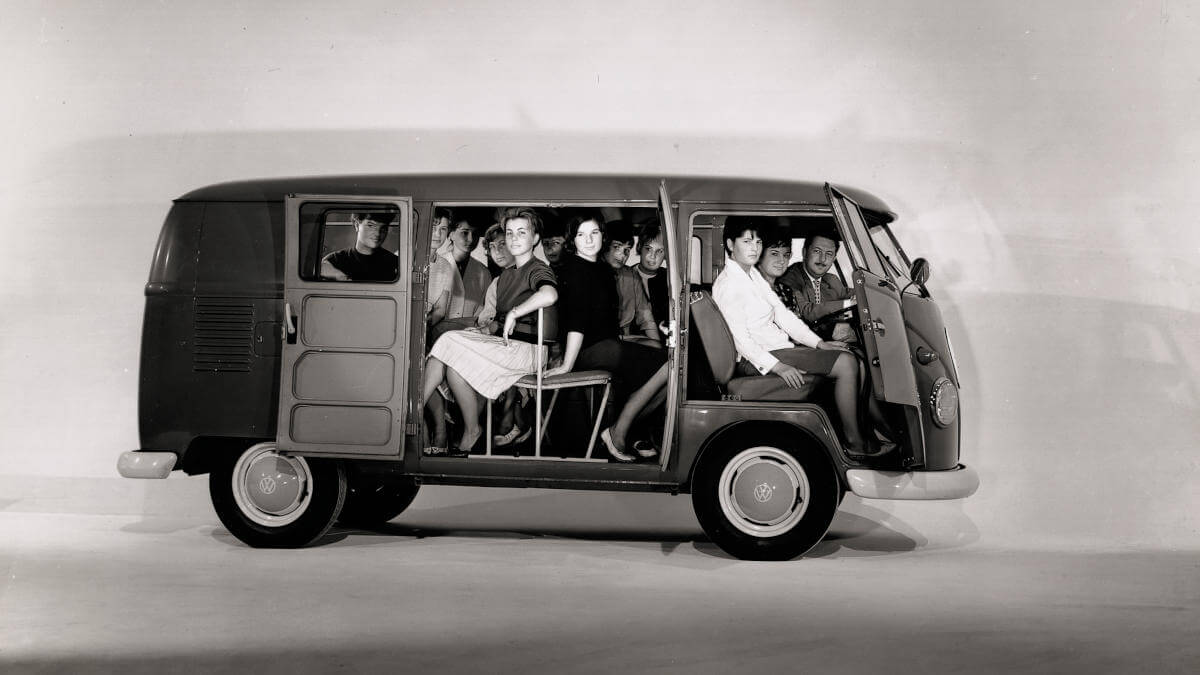



Further development at Porsche
During the test drives with the prototypes, which were carried out exclusively at night, it also turned out that the four-cylinder engine taken over from the Type 1 (Beetle) was overtaxed with the higher load of a fully loaded van. Therefore, the company that had developed this engine was contacted: Porsche. There, smaller measures were taken to achieve greater reliability under load. However, it remained at 18 kW/25 hp from 1.1 liters displacement. The rear axle of the Kübelwagen Type 82 was taken over with a reduction gear. In addition a shorter gear ratio was added to the transmission. This provided better acceleration values, but also reduced the topspeed to around 80 kph (49.7 mph). On November 12, 1949, Volkswagen presented the Transporter, internally known as ‘Type 2’, to a number of journalists for the first time. However, production didn’t start until March 1950.
Cheaper and more versatile than the competition
With a price of DM 5,850, Volkswagen positioned the T1 perfectly in the market. A fully equipped Type 1 (Beetle) cost DM 150 less, but the somewhat larger Tempo Matador with front-wheel drive cost at least DM 1,250 more. For this price, customers received a closed panel van with a length of 4.15 meters, a width of 1.66 meters, a height of 1.9 meters and a wheelbase of 2.4 meters. Behind the driver’s cab, a half-height sheet metal wall provided a partition to the cargo area, which could hold up to 4.59 cubic meters (with a normal roof). As sketched by Ben Pon, the payload was 750 kilograms, even though the transporter only weighed 975 kilograms empty.
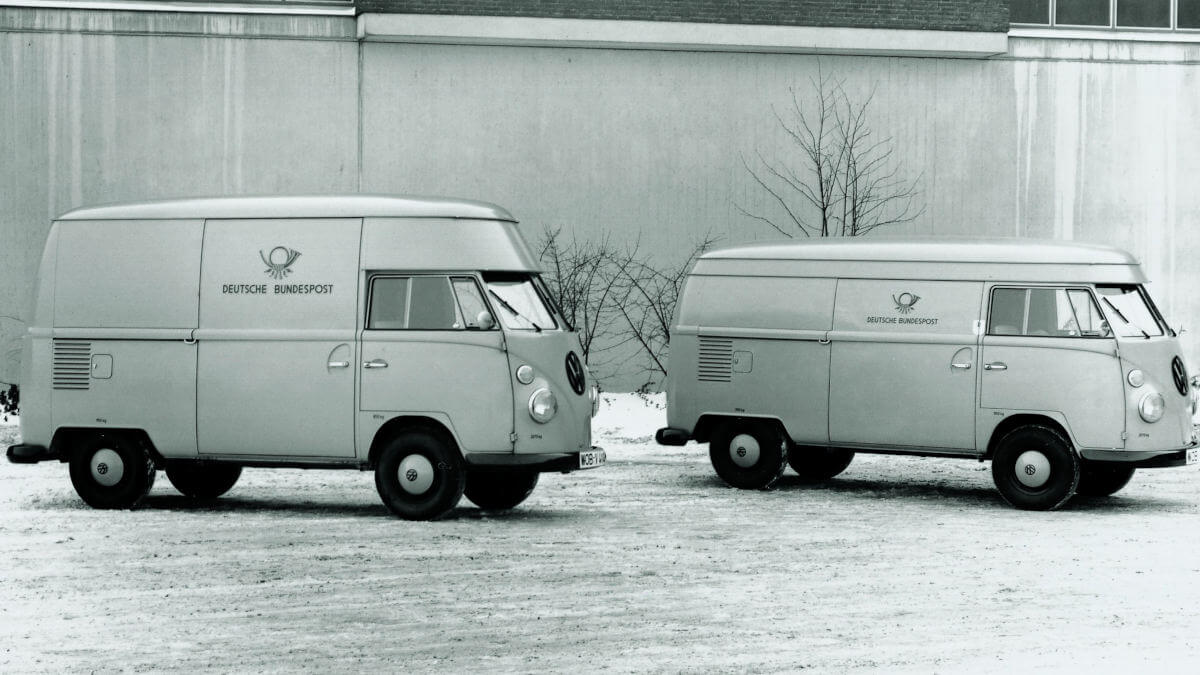



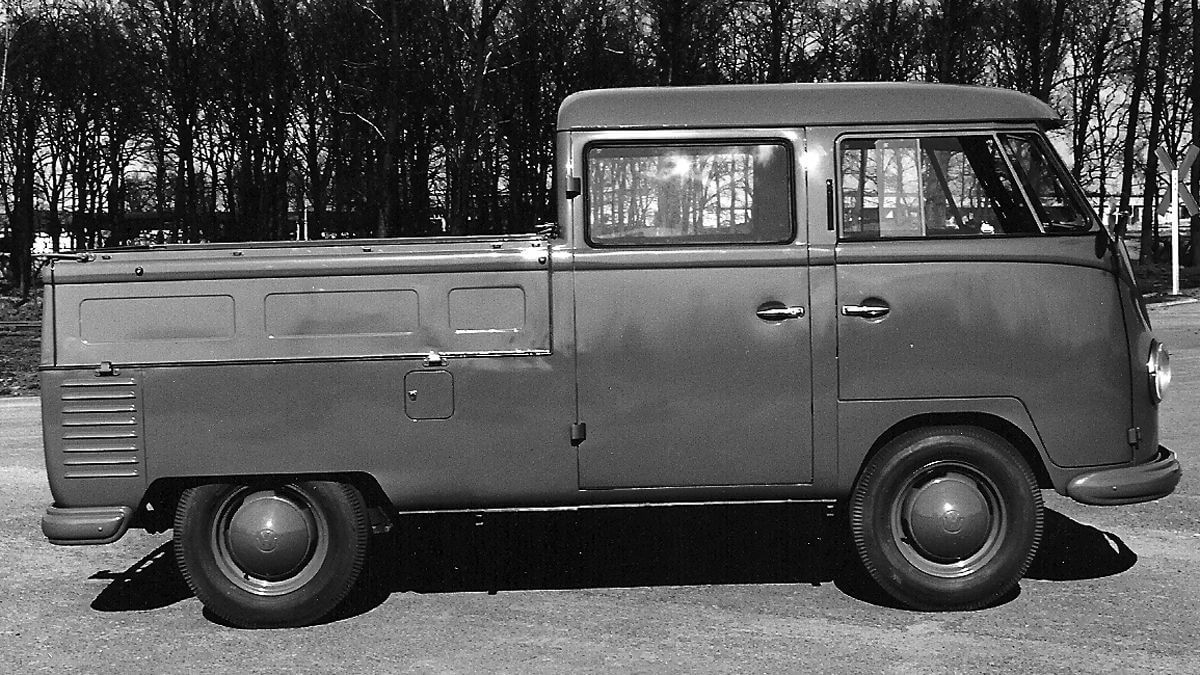















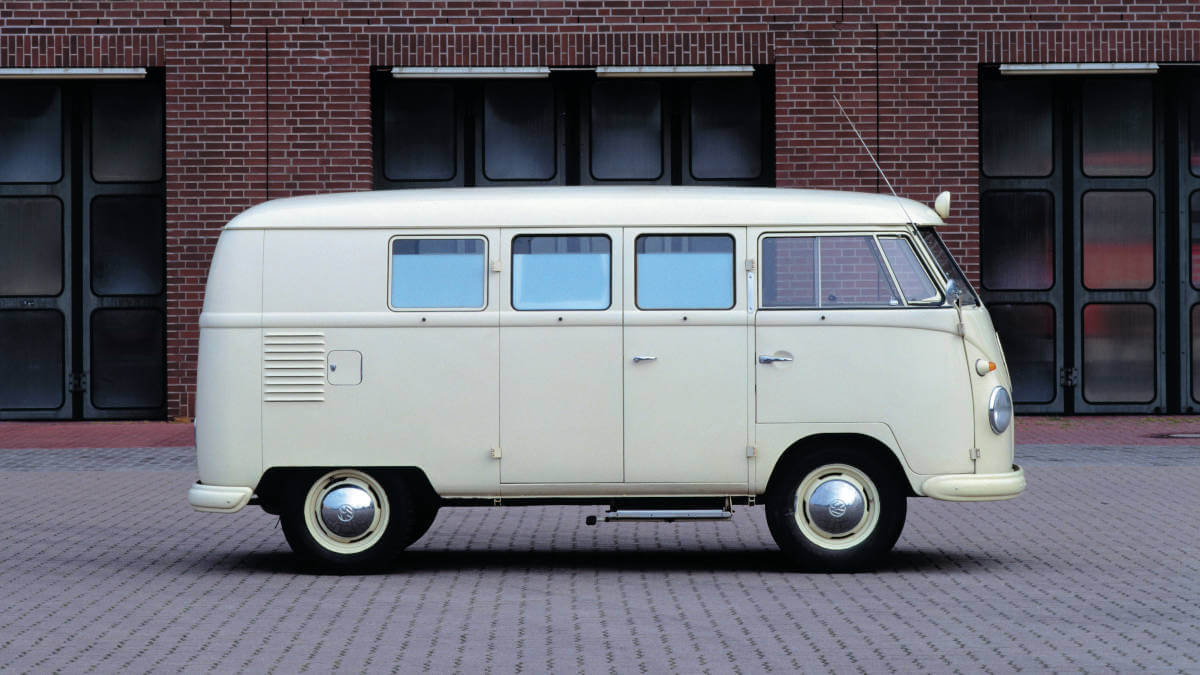



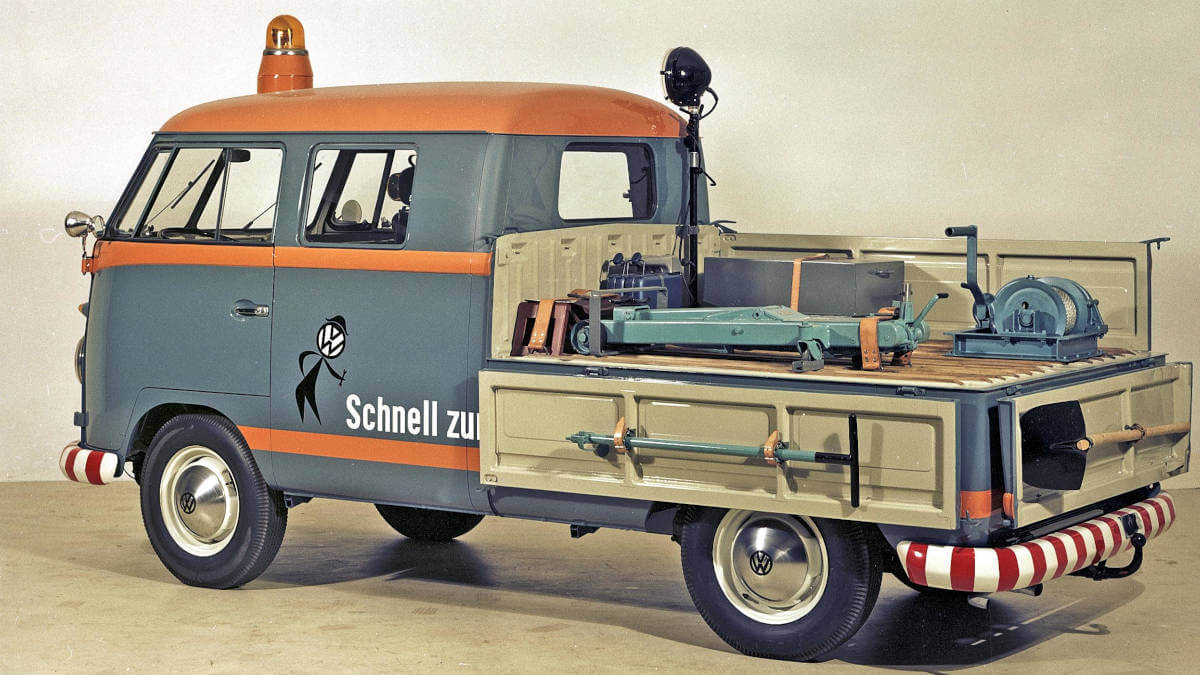











In Germany it is called ‘Bulli’
Very early examples not only had a large VW logo at the front, but were also given another one on the rear panel above the engine door. Underneath it, as seen with the prototypes, a rear bumper was missing. In addition, the T1 was initially only available in ‘Taubenblau’ (pigeon blue) or with a primer coat, so that the customer could apply the desired corporate color himself. Later, VW expanded the color program. Starting in 1952, a trapezoidal rear window was available ex works for the panel van ‘Transporter’ and the glazed and seated ‘Kombi’ and ‘Bus’. While these designations are still common in many countries today, the abbreviation of the words Bus and Lieferwagen (delivery van) became generally accepted in German-speaking countries: Bulli. Until ten years ago, the rights to this word were held by the company Kässbohrer Geländefahrzeuge AG, which is why Volkswagen itself has only been referring to the Bulli in press documents and brochures since 2010. In the UK the car is well-known as ‘Splittie’.
Further developments until 1967
Like the Beetle, Volkswagen also continued to develop the Transporter, Bus and Kombi throughout the entire production period. A transmission with synchronized 2nd to 4th gear (1953) was followed by an increase in power to 22 kW/30 hp from 1.2 liters of displacement together with a standard rear bumper (1954) and a fresh air supply for the interior through slots above the windshield (1955). At the same time the spare wheel was moved from a place in the engine compartment behind the driver’s seat and a duplex system was added to the hydraulic drum brakes. In 1956, T1 production moved from Wolfsburg to the newly built plant in Hanover, where the great-great-great-grandson T6.1 still rolls off the production line today. This was followed by new bumpers (1960) and finally the legally required turn signals, which were also redesigned over the years. There were also various different versions of the headlights and taillights.
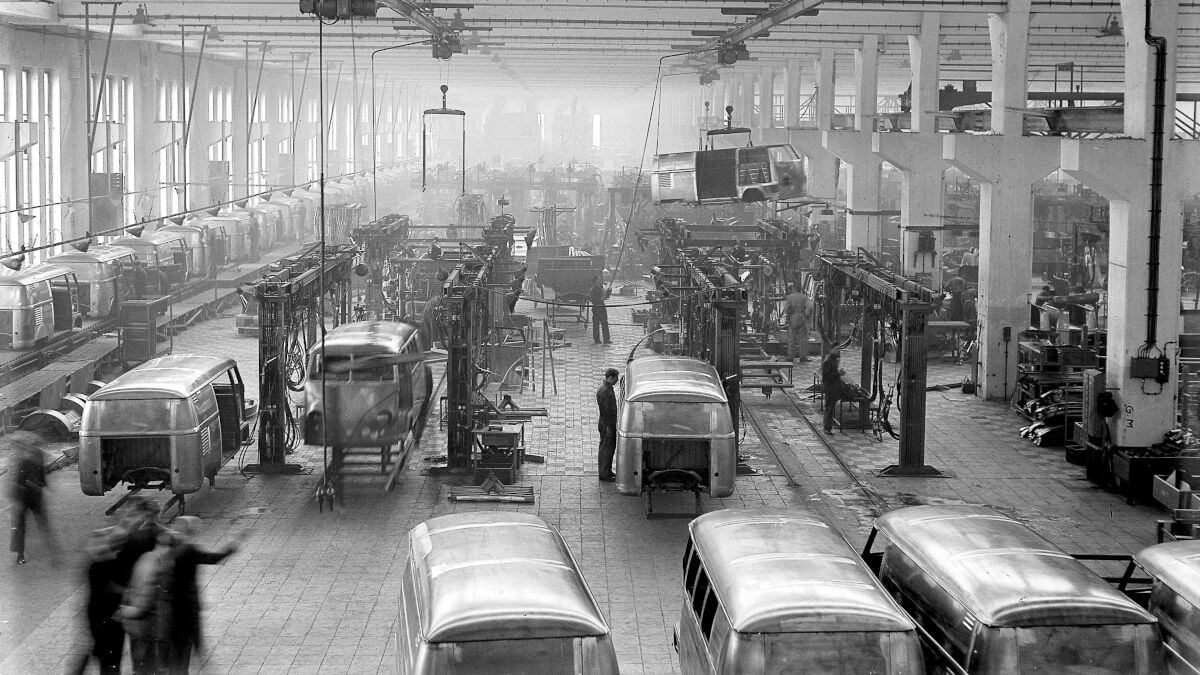



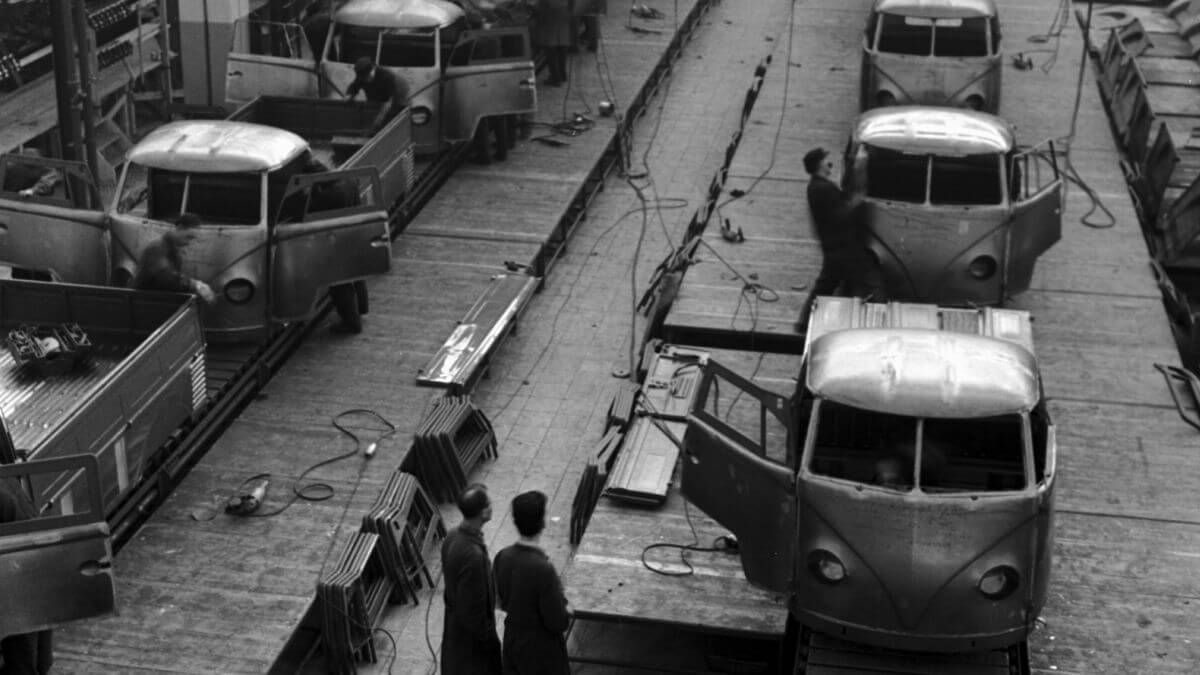



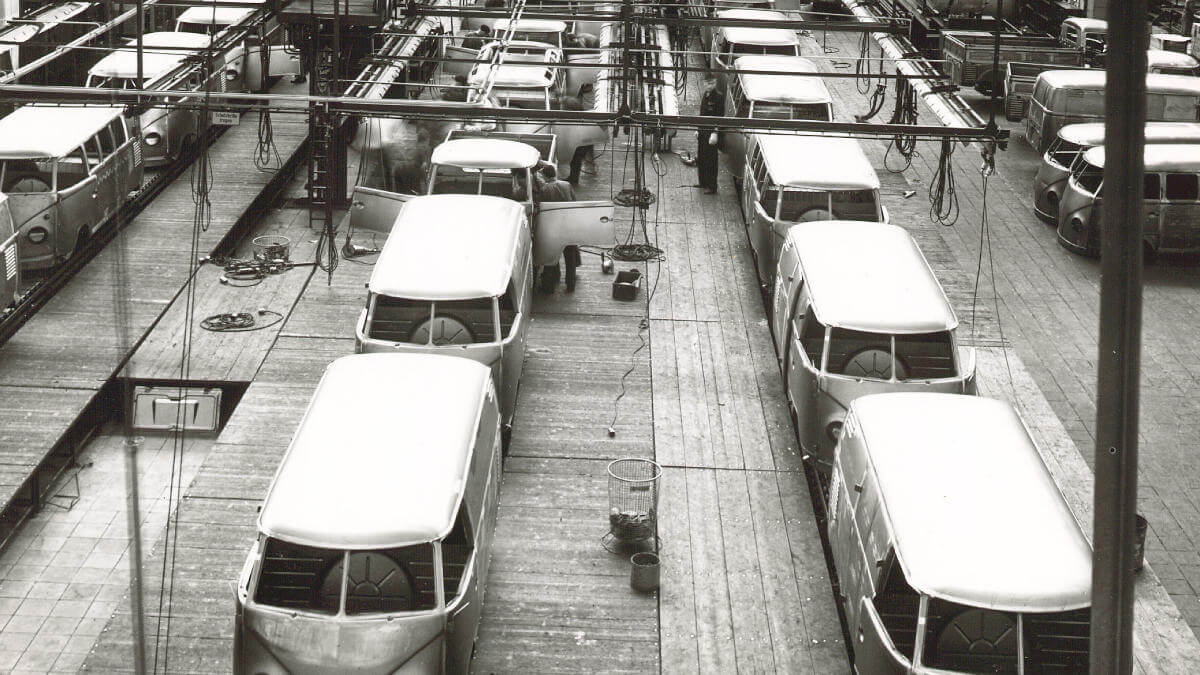







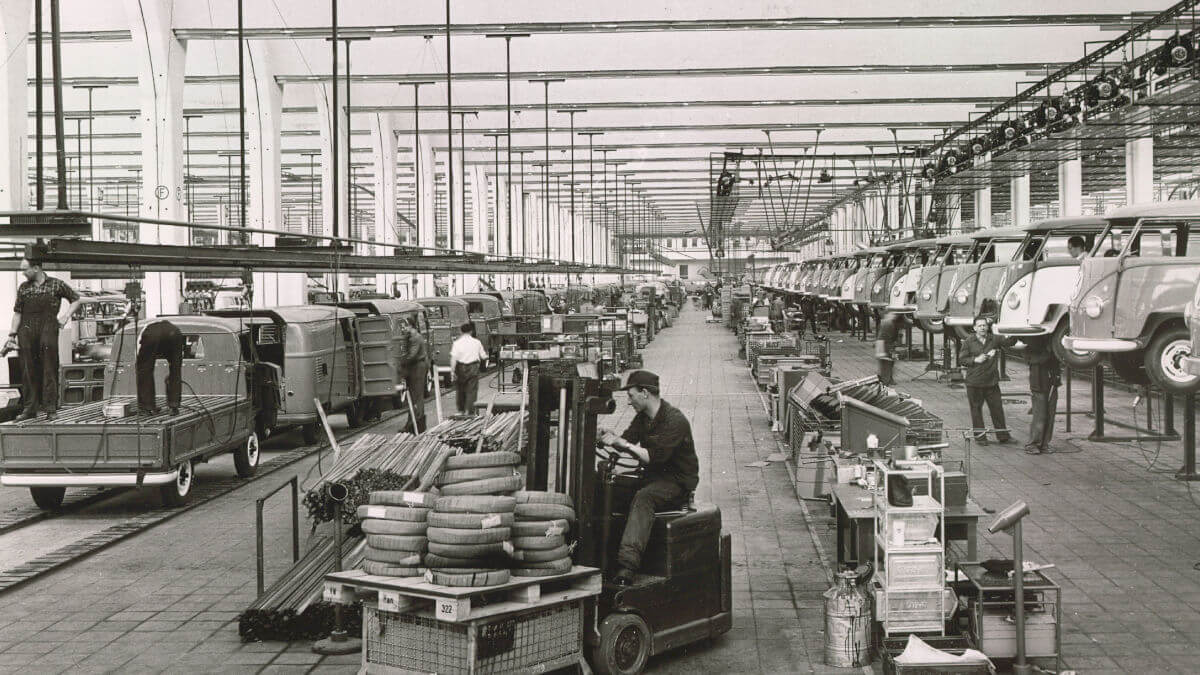







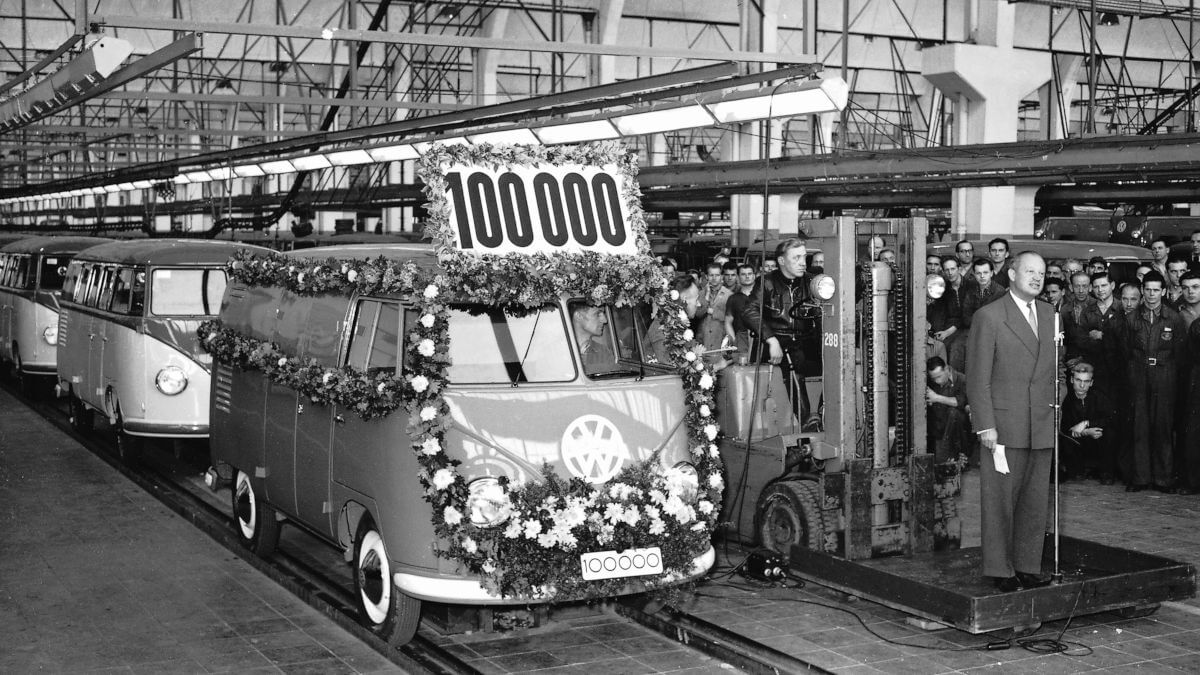



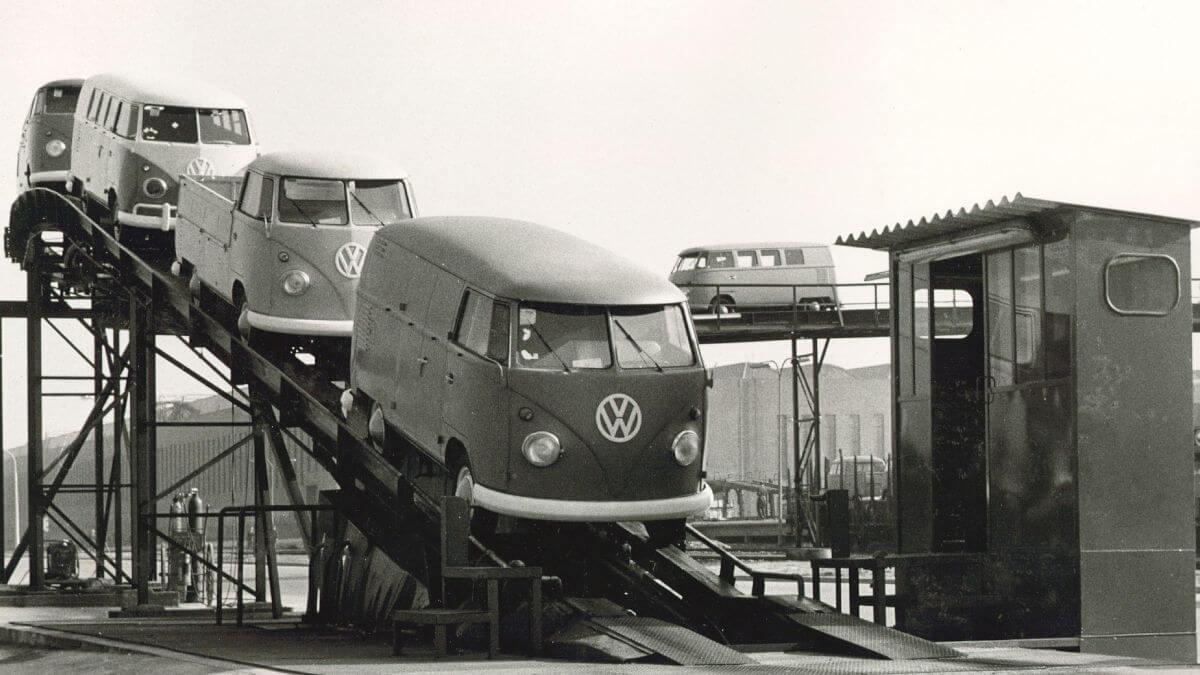



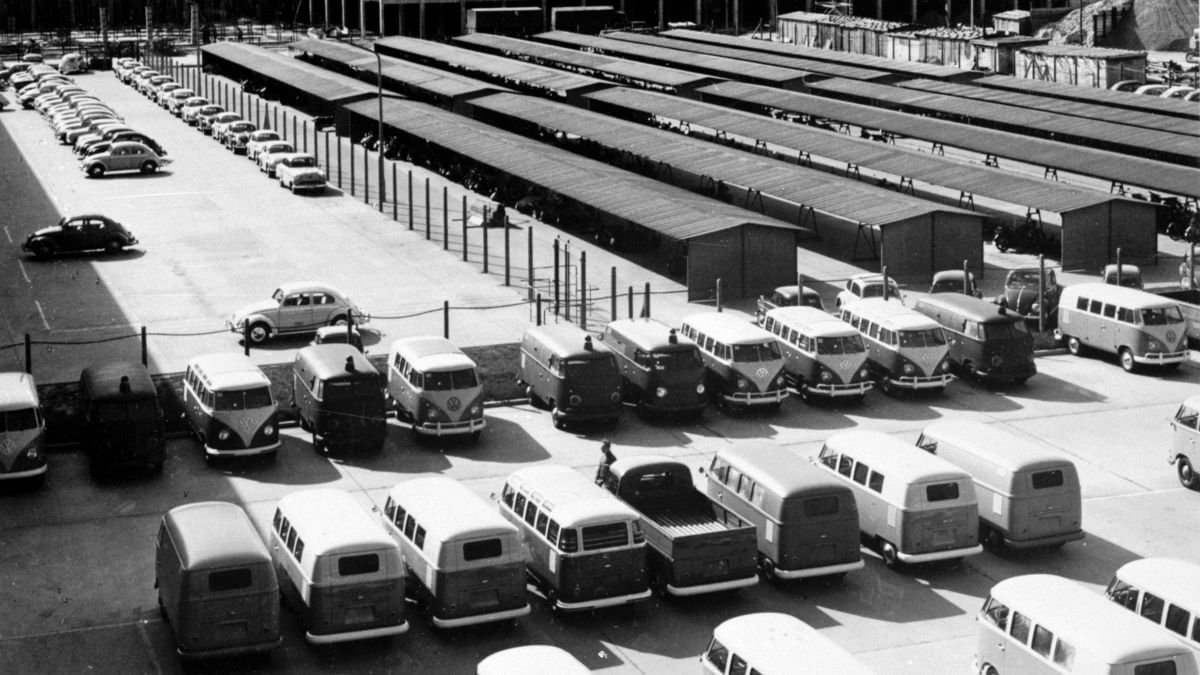











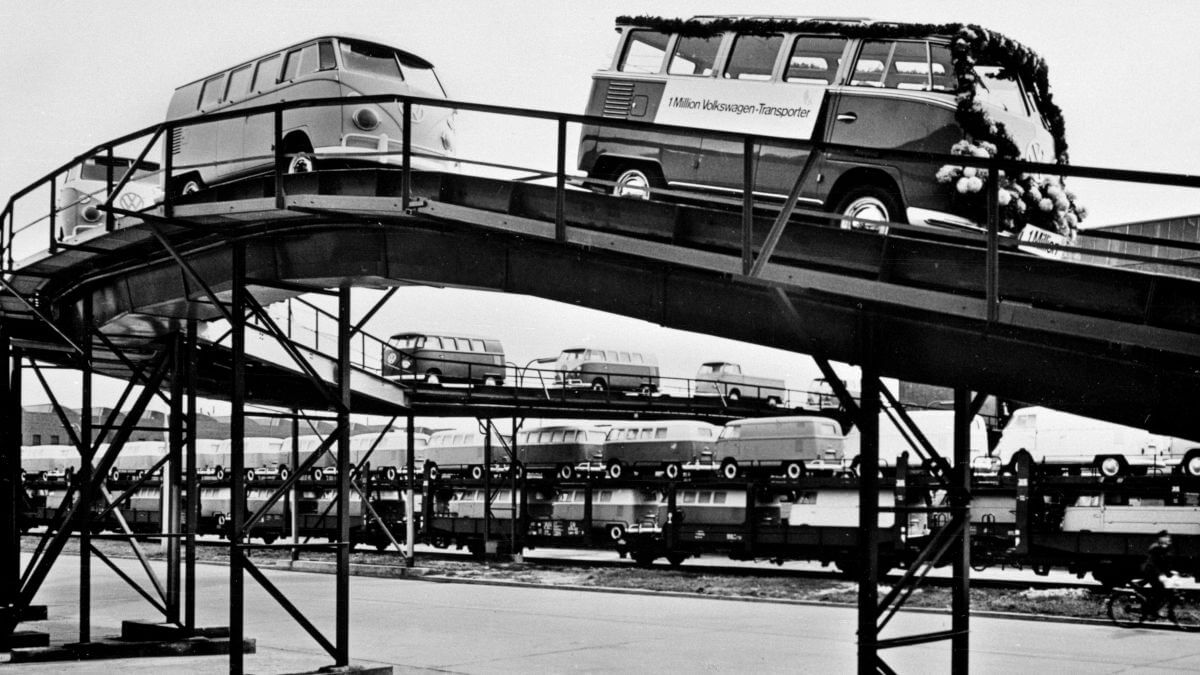



1.8 million units
The engine power increased to 25 kW/34 hp in 1960 and reached the wheels now fully synchronized. Three years later, VW introduced a 1.5-liter boxer engine with 31 kW/42 hp, first in the flatbed versions and later also in the panel van and bus, which, thanks to modified carburetors, produced 32 kW/44 hp from 1965. In the final year of production 1967, the aging concept was finally changed from a 6-volt to a 12-volt electrical system. A total of more than 1.8 million units of the T1 rolled off the production lines in Wolfsburg and Hanover. Many of these were exported all over the world, with the USA in particular becoming a major sales market. Parallel to this, the VW T1 was also produced in series in Brazil from 1957 to 1975. Subsequently, a hybrid was built there until 1997 with the extended front end of the successor T2 and the rear and of the T1.
Samba and Westfalia very popular
Nowadays, the ‘Eight-Seater Special Model’ version is particularly popular. This version is characterized by four additional windows in the side roof area as well as corner windows in the back (making it the 23-window bus) and a cloth sunroof. It is popularly called ‘Samba Bus’, although it isn’t known for sure where this name comes from. Good examples achieve today up to 140,000 €. Just as popular are early camping conversions, which were mainly carried out by the Westfalia company from Rheda-Wiedenbrück in Germany. These campers were already used by hippies and flower-power people in the late 1960s for their extended trips.
Images: Volkswagen, Volkswagen Commercial Vehicles




